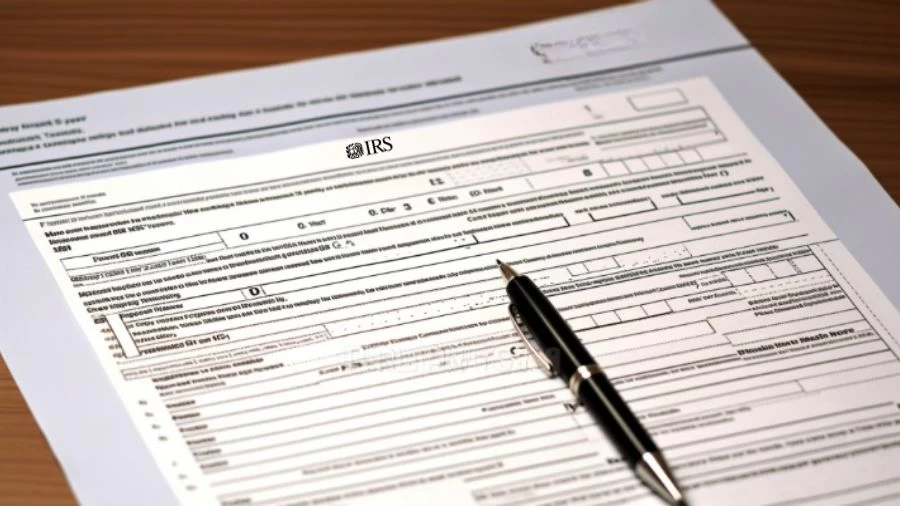
What is Form 5500? When is Form 5500 Deadline 2023?
Form 5500 is an annual reporting requirement for U.S. companies, summarizing their compliance with employee benefit plans, including retirement, health, and insurance plans.
by Kowsalya
Updated Dec 13, 2023
On This Page
What is Form 5500?
Form 5500 is a crucial reporting document that companies in the United States are required to file annually. This form serves as a comprehensive summary of a company's compliance with various employee benefit plans (EBPs).
These benefit plans encompass a wide range of offerings, including self-funded plans, retirement plans, and welfare benefit plans such as dental, health, and life insurance. The primary purpose of Form 5500 is to provide the Department of Labor (DOL) and the Internal Revenue Service (IRS) with essential information, ensuring that companies are effectively managing their employees' benefits in accordance with prescribed regulations.
When is Form 5500 Deadline 2023?
The deadline for filing Form 5500 for the plan year 2023 in the United States was determined based on the end of the plan year. Typically, it fell on the last day of the seventh month after the plan year ended. For instance, if the plan year followed the calendar year (from January 1 to December 31), the Form 5500 deadline for the 2023 plan year was July 31, 2024.
It's important to note that a 2½-month extension option was available for filers. If requested, this extension could push the deadline further to October 15, 2024. This additional time allowed employers and plan sponsors to gather all the necessary information and ensure accurate reporting on Form 5500.
For the plan year beginning on or after January 1, 2023, the deadline rules and regulations applied. The Form 5500 series of forms and instructions related to the 2023 plan year were expected to be released for filing on January 1, 2024, as part of the EFAST2 electronic filing system.
How to File Form 5500?
Filing Form 5500 is a crucial process for businesses in the United States with employee benefit plans (EBPs), and it is necessary to do so accurately and in a timely manner. Here's a detailed guide on how to file Form 5500:
Know Form 5500
- It's a report summarizing your company's employee benefits.
- Different versions based on your business size.
Check Eligibility
- File if you offer benefits through a trust (excluding government and church groups).
- Plans covered by ERISA mandate filing.
Choose the Right Form
- Form 5500: 100 or more plan participants.
- Form 5500-SF: Fewer than 100 participants.
- Form 5500-EZ: Only one participant.
File Electronically
- Use the EFAST2 portal at www.efast.dol.gov.
- Get credentials and ensure the authorized person signs up.
Enter Details
- Provide plan information and upload required documents.
- Attach schedules for specific details.
Review and Submit
- Double-check for accuracy.
- Sign and submit electronically.
Respect Deadlines
- File by the last day of the seventh month after the plan year ends (or July 31 for a calendar-year plan).
- File an extension if needed using Form 5558.
Avoid Mistakes
- Be mindful of common errors, like reporting zero plan participation incorrectly.
- Clearly document plan terminations.
Consider Help
- Use payroll services like OnPay or Gusto for accurate administration.
- Consider third-party administrators.
Stay Informed
- Regularly check for updates on Form 5500 requirements.
- Seek professional advice if needed.
Discover the diverse dimensions of the Business world with MarketsHost serving as your trusted companion. Dive into the ever-evolving market trends, explore groundbreaking strategies, and receive expert guidance to establish your presence in this dynamic environment.
When is Form 5500 Required?
Form 5500 is required when a business offers employee benefit plans (EBPs) through a trust, with certain exceptions for government entities or church groups. The requirement is mandated by the Employee Retirement Income Security Act (ERISA), and businesses must adhere to the filing process for plans falling under ERISA coverage. The types of plans that trigger the Form 5500 requirement include:
- Plans providing retirement benefits for employees.
- Specifically, those established under Section 408(c).
- Plans offering various health and insurance benefits.
- Plans providing financial support to employees upon termination.
- Plans allow employers to share profits with employees.
- Plans distributing employer stock as a form of bonus or incentive.
- Plans offering financial support in the event of disability.
What is Form 5500 - FAQ
1. When should I file Form 5500?
The deadline for filing Form 5500 for the 2023 plan year is the last day of the seventh month after the plan year ends, which is typically July 31, 2024, for calendar-year plans.
2. What types of plans require Form 5500 filing?
Pension plans, IRAs, medical, dental, life insurance, severance pay, profit-sharing, stock bonus plans, and disability benefits are among the plans covered by Form 5500 filing requirements.
3. How do I file Form 5500?
Form 5500 must be filed electronically through the ERISA Filing Acceptance System (EFAST2) portal after registering and providing required plan information.
4. What are the penalties for late Form 5500 filing?
Late filers may face penalties up to $250 per day from the IRS and up to $2,400 per day from the DOL. The DFVCP provides a way to cap penalties for late filers.
5. Who is exempt from Form 5500 filing?
Government entities, churches, and certain plans maintained for compliance with specific laws or outside the US may be exempt from Form 5500 filing requirements.




